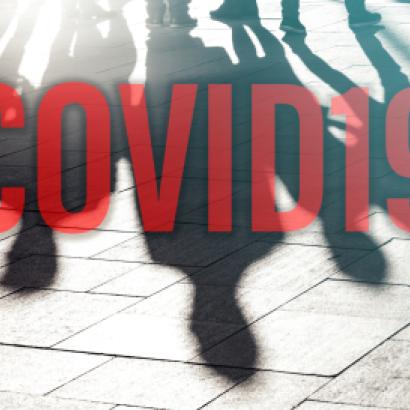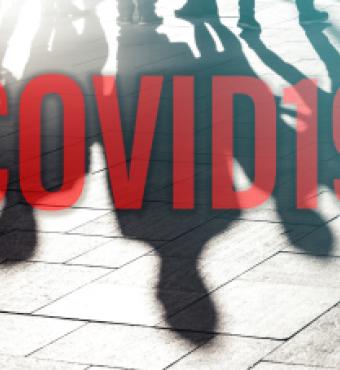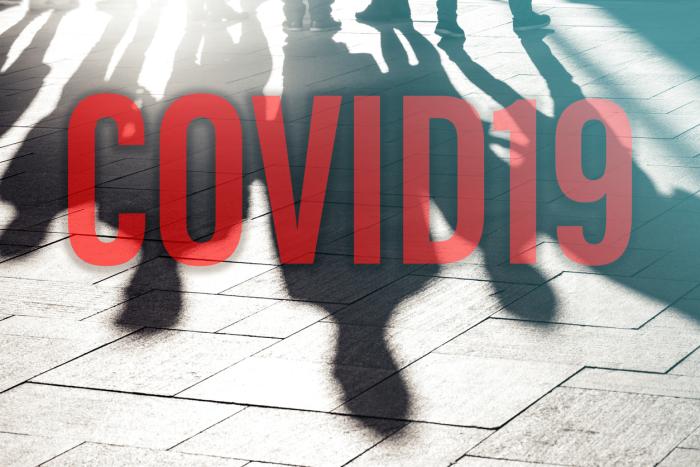- Economics
- Energy & Environment
- Health Care
- History
- Politics, Institutions, and Public Opinion
Historical parallels will help to guide us through the next phases of the present COVID-19 pandemic. Of several comparable historical episodes, the 1918 Spanish flu may be the most relevant for modelling the current pandemic. As with COVID-19, the Spanish flu covered much of the world’s globe. It was terribly lethal, resulting in an estimated 500,000–675,000 deaths in the U.S. and 50–100 million deaths worldwide. Its mortality rate was 2.5 percent. COVID-19, whose death rates remain to be established, could be considerably lower.
Our arsenal of weapons to fight a COVID-19-like pandemic is limited and time-dependent. Mutations of the virus mean that each virus attack requires the time-consuming task of developing new vaccines or pharmaceutical treatments. With few existing choices, we are left with Non-Pharmaceutical Interventions (NPI), such as school, work, and theater closings and quarantines. These are the anti-plague remedies that have been used since the Middle Ages. Insofar as they can be put in place quickly, NPIs tend to be the frontline defense against pandemics.
As is the case with today’s COVID-19, NPIs were used in the United States and elsewhere to halt the Spanish flu’s spread. Were they effective? If effective, would their impact on COVID-19 be much the same as in 1918?
We have a ready-made scientific literature on the Spanish Flu that addresses the very questions for which we desperately need policy guidance. The most important such question is the proper role of NPI’s in combatting today’s COVID-19 pandemic.
NPIs—quarantines, closures, anti-congestion rules, and the like – have been presented to the public largely as “time-buying” devices rather than as a means to reduce the incidence of disease and mortality. It is argued that NPIs, by diminishing the transmission of disease while they are in effect, can give hospitals and health professionals time to prepare for the onslaught of patients, to develop new treatments, and to prevent a collapse of public health. The negative side is that, once the NPIs are lifted, those previously sheltered will become ill as they are exposed. If illness and death are simply postponed to after the NPIs are lifted, they will not reduce cumulative mortality.
The buying-time message is not particularly encouraging. It presents us with a choice of being ill now (and treated in an overwhelmed medical system) or later, hopefully with less congestion and perhaps better treatments.
The 1918 Spanish flu provides key data points for current policy. The 1918 NPIs were the same in intent and duration (about six weeks) as has been the case so far for COVID-19. Most important, we know the 1918 outcome from the historical literature. U.S. cities employed different combinations of NPIs in 1918 with different timings and results. This variation allows researchers to test hypotheses concerning the effects of various combinations of NPIs on disease transmissions during the Spanish flu pandemic.
In a 2007 National Academy of Sciences study of the Spanish Flu, researchers used data on the timing of 19 classes of NPIs in 17 U.S. cities during the 1918 pandemic to test whether early implementation of multiple NPI interventions was associated with reduced disease transmission. Indeed, the researchers found that “cities in which multiple interventions were implemented at an early phase of the epidemic had peak death rates 50% lower than those that did not and had less-steep epidemic curves.” In other words, the timely introduction of NPI measures reduced peak mortality in the surveyed cities.
The finding of reduced peak mortality seems to confirm that the timely introduction of multiple interventions does indeed buy time to prepare for the peak of the pandemic and in this sense plays a positive role. The finding does not rule out that NPIs simply transfer illness and death to later dates and hence does not lower cumulative mortality.
On this point, researchers find that “cities in which multiple interventions were implemented at an early phase of the epidemic also showed a trend toward lower cumulative excess mortality, but the difference was smaller (20%) and less statistically significant than that for peak mortality.”
The lower cumulative mortality rate is the most encouraging finding from the 1918 flu experience, although this finding is less robust than the effect on peak mortality.
How about the choice of NPIs? Of the nearly 20 types of NPIs used in 1918, there were not one or two “silver bullets” (such as school closings or store closure) that reduced, by themselves, excess or cumulative mortality. Rather there had to be a combination of NPIs for the effect to be felt.
As attention turns from the COVID-19 epidemic to economic recovery, scholars have begun to use the 1918 experience to study the relationship between NPIs and economic recovery.
In a preliminary and unpublished paper dated March 25, 2020, titled “Pandemics Depress the Economy, Public Health Interventions Do Not: Evidence from the 1918 Flu,” three economists (cited in a note at the end of this piece) measure the disastrous economic effects of the 1918 pandemic as it swept from the east of the U.S. to the west. Their unexpected finding, which takes advantage of the regional variation in NPI interventions and local economic outcomes, is that “cities that intervened earlier and more aggressively grow if at all faster after the pandemic is over. Our findings thus indicate that NPIs not only lower mortality; they also mitigate the adverse economic consequences of a pandemic.”
Most U.S. states and communities have been locked down for two weeks. Rates of increase of mortality and positive cases have not peaked. The first COV-19 economic data show the economy entering a tailspin. The nation’s chief executive and fifty governors therefore face a momentous choice: When to release their citizens from “sheltering in place” and “social distancing” and allow them to return to a more normal lifestyle in this age of pandemic?
If the release turns out to be premature, accusations of sacrificing precious lives for economic gains will abound. If the release is judged as too delayed, the charge will be the destruction of the U.S. economy. Our political leaders will probably never face such a momentous decision again in their political careers. They will have none if they come down on the wrong side.
*Author’s note: The economists are Sergio Correa, Stephan Luck and Emil Verner, of the Federal Reserve Board, the Federal Reserve Bank of New York, and MIT’s Sloan School of Management, respectively.
















